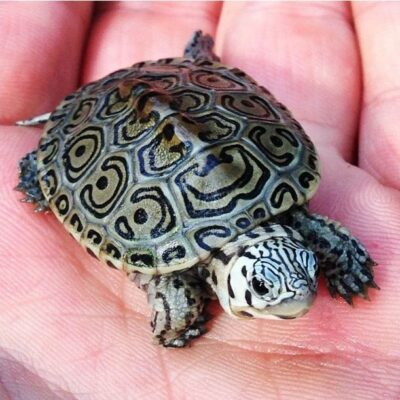Buy a subadult Snake-Necked Turtle online.
Subadult Snake-Necked Turtles—especially species like Chelodina longicollis and Macrochelodina rugosa—are fascinating, semi-aquatic reptiles with ancient lineage and unique hunting adaptations. At the subadult stage, they’re past the fragile hatchling phase but not yet sexually mature, making them ideal for acclimation and long-term husbandry. Here’s a detailed breakdown:
🐢 Subadult Snake-Necked Turtle Profile
| Attribute | Details |
|---|---|
| Age Range | ~1.5 to 4 years |
| Size | ~6–9 inches (15–23 cm) shell length |
| Sexual Maturity | ~5–7 years depending on species |
| Behavior | Active, alert, and developing territorial instincts |
| Lifespan | 30–50 years in captivity |
Subadults are robust enough for outdoor setups or large aquaria, and they begin to show species-specific traits like neck extension, feeding aggression, and basking preferences.
Buy a subadult Snake-Necked Turtle online
🧬 Species Highlights
- Eastern Snake-Necked Turtle (Chelodina longicollis)**
- Native to eastern Australia
- Known for its musk defense and long, flexible neck
- Shell: Dark brown to black with cream/yellow plastron
- Northern Snake-Necked Turtle (Macrochelodina rugosa)**
- Found in northern Australia and New Guinea
- Lays eggs underwater that enter diapause until the dry season ends
- More aquatic than other species
- Siebenrock’s Snake-Necked Turtle (Macrochelodina siebenrocki)**
- Native to Indonesia and Papua New Guinea
- Rare in captivity; prized for its elongated neck and aggressive feeding
🏡 Enclosure & Setup
- Tank Size:
- Minimum: 75–100 gallons for subadults
- Outdoor pond: 300+ gallons with secure fencing
- Water Quality:
- pH: 6.5–7.5
- Temp: 75–82°F (24–28°C)
- Filtration: Canister or sump system with biological media
- Basking Area:
- Dry dock with UVB lighting
- Basking temp: 88–92°F (31–33°C)
- Substrate: Sand or river rock bottom; avoid gravel that can be ingested
These turtles prefer walking along the bottom rather than swimming mid-column, so horizontal space is key.
🍽️ Diet & Feeding
- Carnivorous:
- Fish, shrimp, snails, tadpoles, insects
- Occasional pinky mice or frog legs for adults
- Avoid fatty meats or high-protein pellets long-term
- Feeding Style:
- Ambush predators—use neck to strike prey with vacuum-like force
- Feed 3–4x/week for subadults
- Supplements:
- Calcium block or cuttlebone in the tank
- Vitamin D3 via UVB exposure
🧠 Behavior & Temperament
- Alert & Reactive: Will track movement and strike quickly
- Territorial: Males may become aggressive; best housed solo
- Defense Mechanism: Emits musk from glands when stressed
They’re not handleable pets, but they’re highly engaging to observe—especially during feeding.






Reviews
Clear filtersThere are no reviews yet.